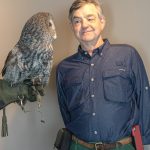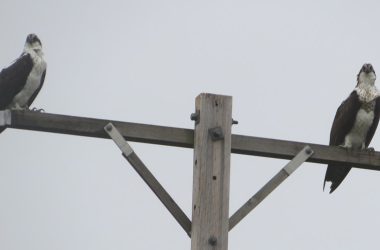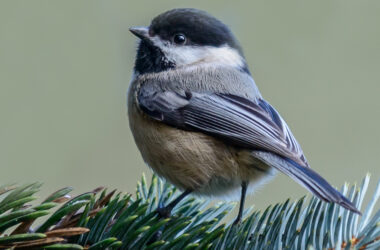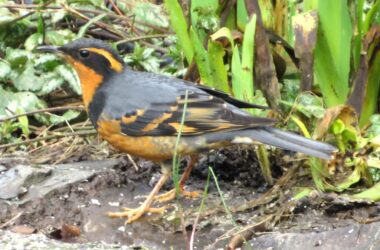Ready for a convenient birding trip? Try a visit to the Baskett Slough National Wildlife Refuge. It is only 13 miles from the middle of the Marion Street Bridge over the Willamette River. So a twenty minute drive from the bridge can get you to the parking lot off Coville Road where the Rich Guandagno Trail heads uphill. Just south of there you can walk down into the marshlands which are closed off during the cold months.
The variety of habitats hosts a variety of birds. There are marshes, lakes, oak-covered hillside, Mt. Baldy, grasslands, stands of cottonwoods and willows. Water flows into the lowlands via Baskett Slough coming from the north. It is joined by Harland Slough from the south. Heading off the refuge, Baskett Slough meanders southeast and empties into Rickreall Creek just west of Greenwood Road.Any waterflow from this watershed goes into the Willamette.
Every time of year offers birding excitement at Baskett Slough. Any time of year you can find egrets and herons, or raptors like bald eagle, peregrine, or harrier. Red-winged blackbirds, scrub jays, crows, Bewick’s wren, goldfinches and song sparrows are always around.
Summer means swallows hawking insects over any water, waxwings perhaps joining them for some protein on the wing. Meadowlarks, our state bird, may sing well into July. By late summer migrants from further north begin to arrive, especially shorebirds.
In fall the refuge’s reason for existence becomes clear. Thousands of cackling geese begin to arrive from the Arctic. They look like an economy-sized version of Canada geese, but are separate species. They inhabit the marshes and grassy fields of Baskett, arriving in September and October. Some linger into May. They spend most of their lives here, going back north for a brief breeding season when the sun never sets and activity is 24 hours per day. They must relish each long sleep after our short winter days.
The cacklers are not the only winter vacationers — a list of migratory ducks arrive, along with pipits, shorebirds, gulls and two species of swan. At that season it is mostly roadside birding but the Guandagno trail remains open. The numerous waterfowl attract an increased number of hungry bald eagles.
Then spring brings a hastened process of change — dozens of species leave, dozens pass by or arrive for breeding. Tree swallows and turkey vultures may return before the official first day of spring. Later come warblers, flycatchers and many species in transit. So migration can mean a common loon stops for awhile or some phalaropes or a plovers en route to Alaska.
This 2,500-acre refuge was established in 1965, and every year, every day, it proves valuable to our feathered neighbors.
For information about upcoming Salem Audubon programs and activities, see www.salemaudubon.org, or Salem Audubon’s Facebook page.
Harry Fuller is an Oregon birder and natural history author of “Freeway Birding.” He is a member of the Salem Audubon Society. Contact him at [email protected] or atowhee.blog. His “Some Fascinating Things About Birds” column appears regularly in Salem Reporter.
SUPPORT OUR WORK – We depend on subscribers for resources to report on Salem with care and depth, fairness and accuracy. Subscribe today to get our daily newsletters and more. Click I want to subscribe!

Harry Fuller is an Oregon birder and natural history author of three books: “Freeway Birding,” "Great Gray Owls of California, Oregon and Washington," and "San Francisco's Natural History--Sand Dunes to Streetcars." He leads birding trips for the Malheur Field Station. He is a member of the Salem Audubon Society, and leads bird trips locally. Harry has just published a new book, BIrding Harney County.









